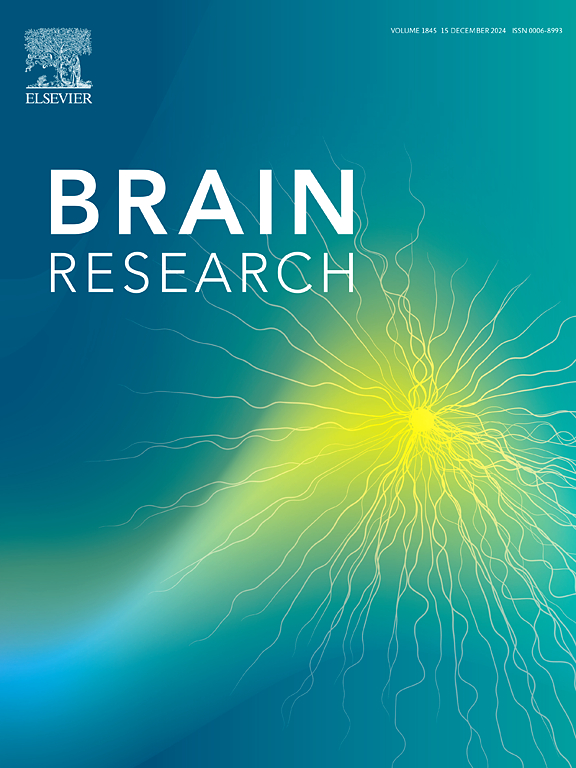Passiflora incarnate extract attenuates neuronal loss and memory impairment in stressed rats
IF 2.7
4区 医学
Q3 NEUROSCIENCES
引用次数: 0
Abstract
The present study investigated the protective effects of hydroalcoholic Passiflora incarnate extract on memory, anxiety-like behaviors, inflammatory factors, and cell density in the brain following stress. This study randomly divided 40 adult Wistar rats into 5 groups: control, normal saline, stress, stress + Passiflora incarnata, and Passiflora incarnata groups. For 21 consecutive days, the stress group and the Passiflora incarnata + stress group were exposed to immobilizing stress for 2 h each day. The Passiflora incarnata and the stress + Passiflora incarnata groups were gavaged with Passiflora incarnata extract half an hour before stress for 21 days. One day after the last stress, the Barnes and elevated plus maze were used to measure learning, memory, and anxiety-like behavior, respectively. Additionally, the MDA (malondialdehyde), TNF-α, IL-1, and gamma-glutamyl transferase (GGT) factors in the serum, as well as the cell density in the hippocampus, amygdala, and prefrontal regions, were investigated. The results of the Barnes maze showed that immobility stress increases the number of errors and the distance traveled to reach the target hole. Administering Passiflora incarnata extract prior to stress led to fewer errors and a shorter distance covered to reach the target hole. The use of Passiflora incarnata before stress in the elevated plus maze reduced anxiety-like behaviours (less frequent entries into the open arm, reduced duration of time in the open arm) compared to the stress group. The stress group caused a significant enhance in MDA, TNF-α, and IL-1 and a decrease in GGT, while treatment with Passiflora incarnata significantly improved these factors than the stress group. The immobility stress caused a significant decrease in cell density in the hippocampus, amygdala, and prefrontal region, and treatment with Passiflora incarnata increased cell density in these areas than the stress animals. In conclusion, Passiflora incarnata improves learning and memory impairment, anxiety-like behaviors, inflammatory factors, and damage caused by stress in the hippocampus, amygdala, and prefrontal areas.
西番莲提取物能减轻应激大鼠的神经元损失和记忆损伤
本文章由计算机程序翻译,如有差异,请以英文原文为准。
求助全文
约1分钟内获得全文
求助全文
来源期刊

Brain Research
医学-神经科学
CiteScore
5.90
自引率
3.40%
发文量
268
审稿时长
47 days
期刊介绍:
An international multidisciplinary journal devoted to fundamental research in the brain sciences.
Brain Research publishes papers reporting interdisciplinary investigations of nervous system structure and function that are of general interest to the international community of neuroscientists. As is evident from the journals name, its scope is broad, ranging from cellular and molecular studies through systems neuroscience, cognition and disease. Invited reviews are also published; suggestions for and inquiries about potential reviews are welcomed.
With the appearance of the final issue of the 2011 subscription, Vol. 67/1-2 (24 June 2011), Brain Research Reviews has ceased publication as a distinct journal separate from Brain Research. Review articles accepted for Brain Research are now published in that journal.
 求助内容:
求助内容: 应助结果提醒方式:
应助结果提醒方式:


